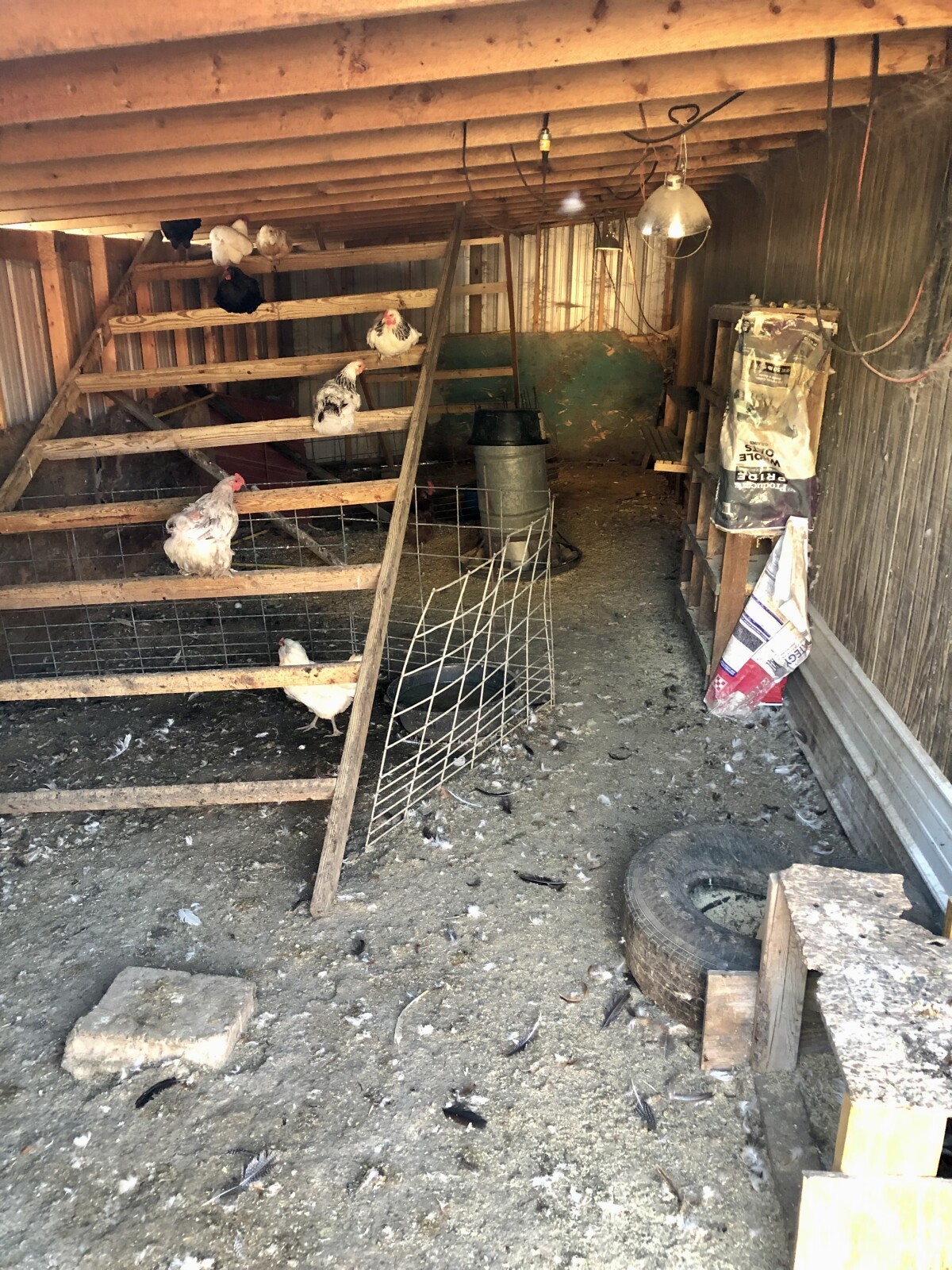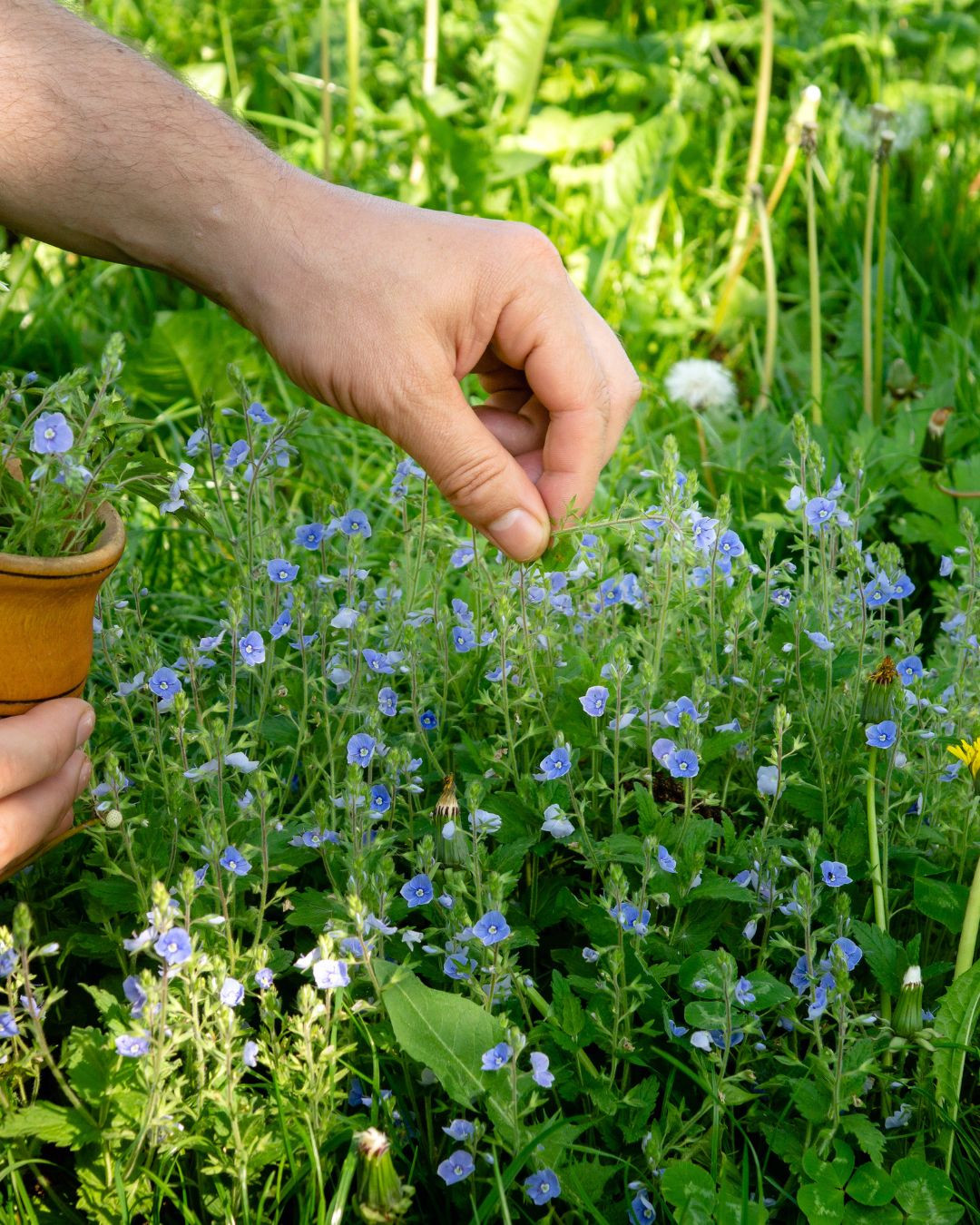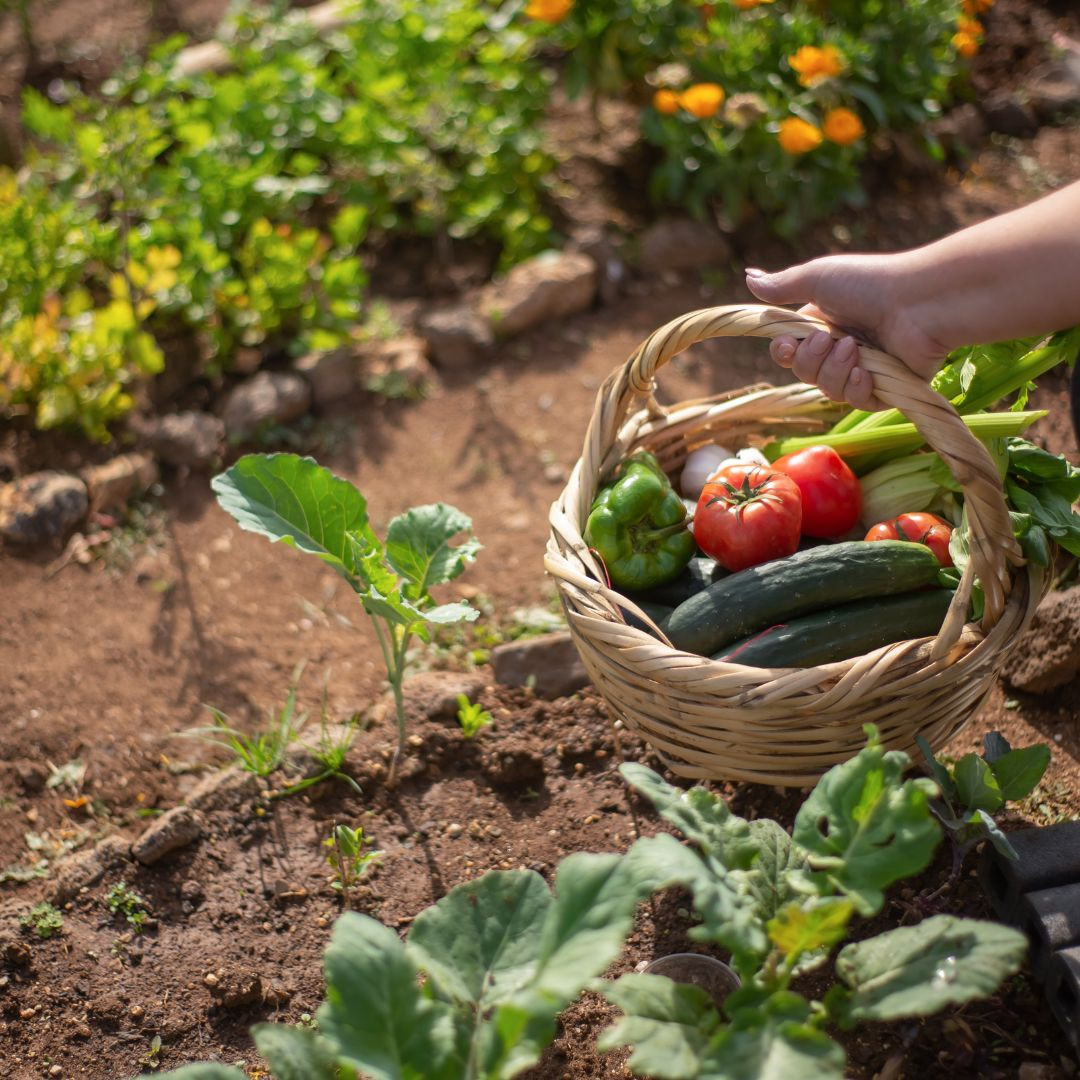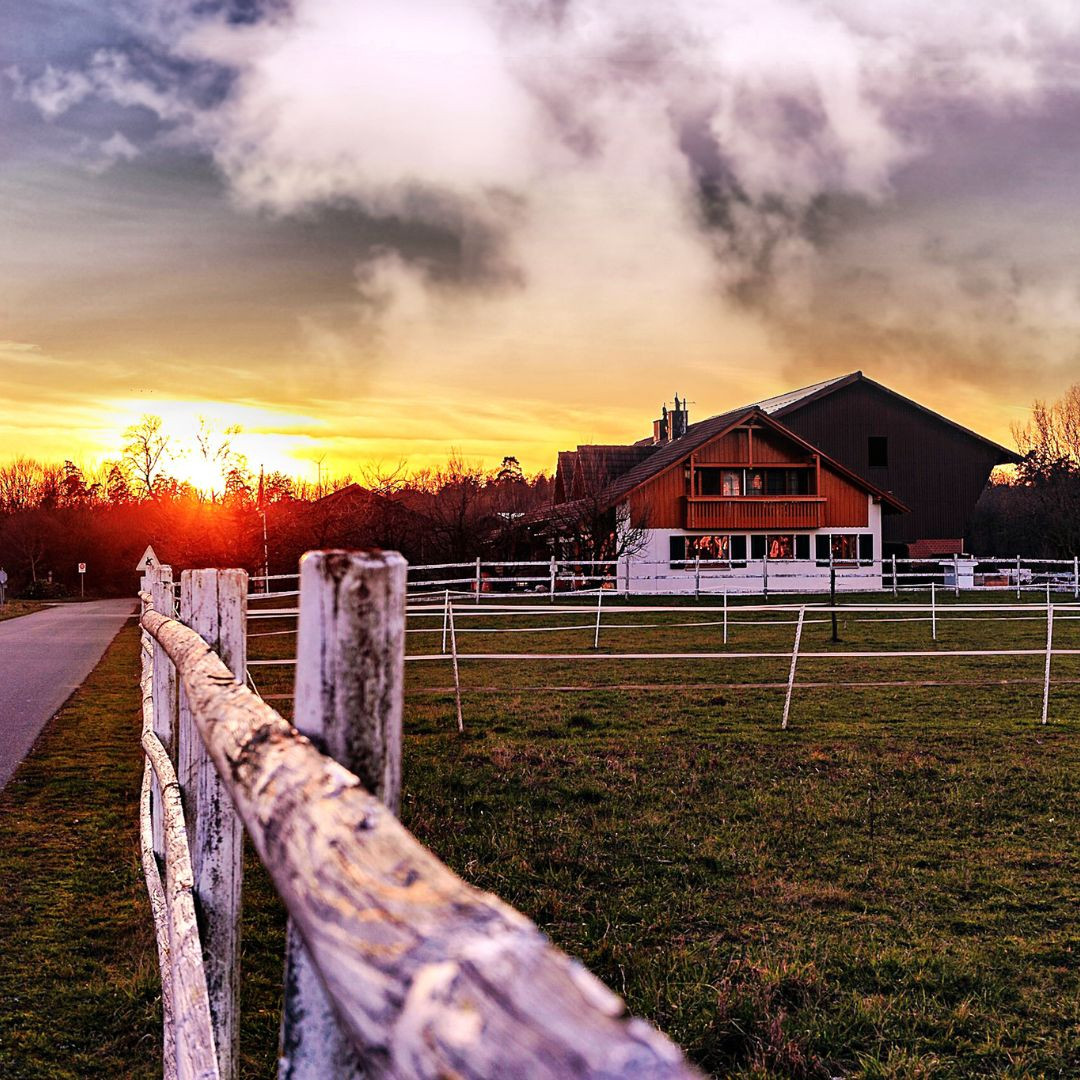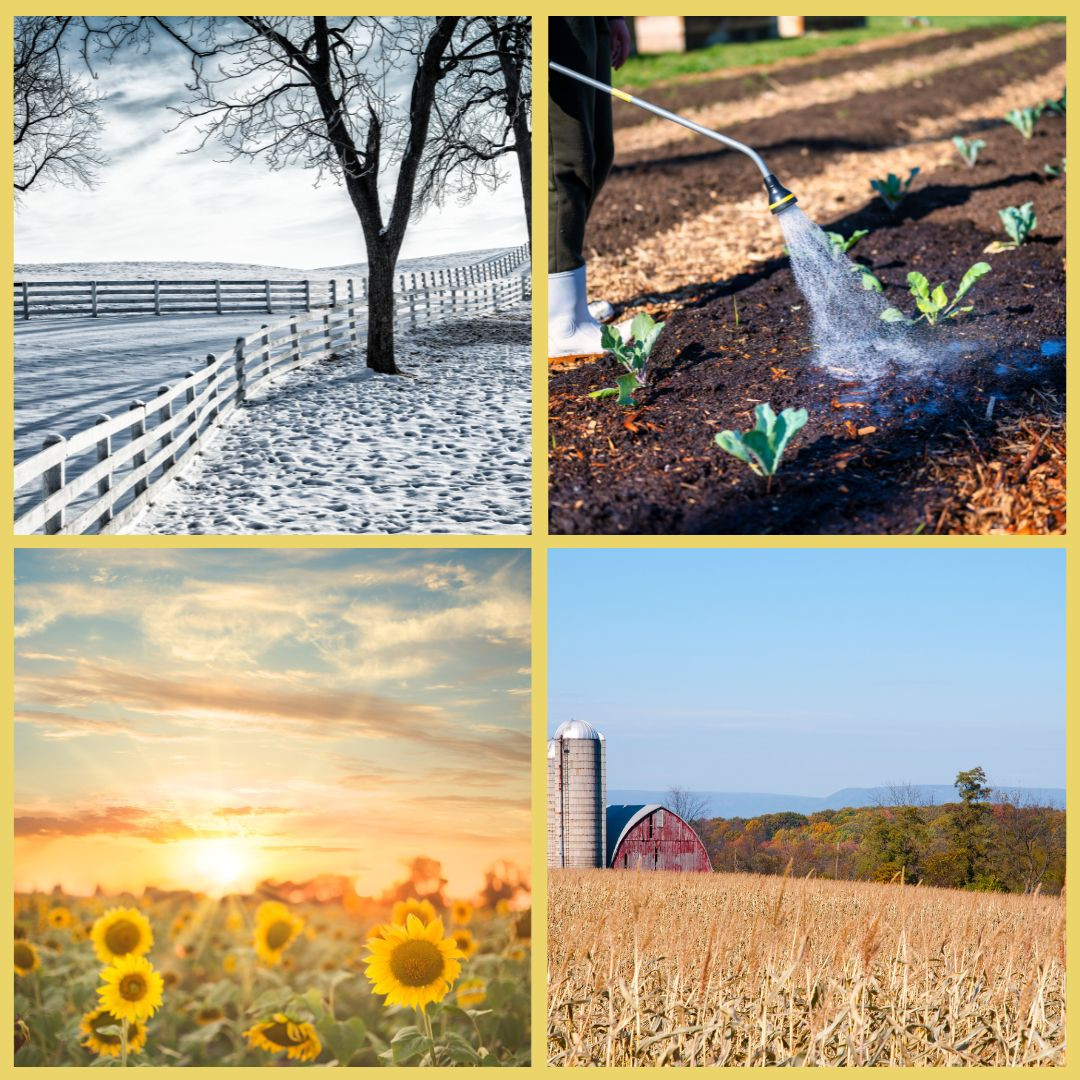
This post may contain affiliate links, which means that I may receive a commission if you make a purchase using these links, with NO additional cost to you.
Chickens, they call them the entry point to homesteading and for good reason! They are by far the easiest livestock to raise and can be done almost anywhere (yes even in town). But are you saving money by raising your own chickens? Either for eggs or meat really? This goes for any poultry, chickens, ducks, guineas, turkeys, geese, or any other feathered livestock.
In general, you want to evaluate your costs vs potential profits. Yes, I say potential, because you’re probably eating the eggs or meat that comes from your birds. There is this economic term called opportunity cost. Basically, it’s the cost of what else could be done with that item. Take eggs for example. You eat a dozen eggs. The opportunity cost is what you could have sold those eggs for.
When evaluating your cost also consider the useful life of those purchases. For instance, a waterer will last 3-5 years, but you will assume that the cost is up front.
Typical expenses that you will use for several years, include waterers, feeders, coop, and birds. Laying hens will peak their production in year two, and average living 2-4 years. Some sources say they can live up to 10 years.
Reoccurring expenses are expenses you must continue to buy no matter what. These include feed, water if you must pay for it, and bedding. On average a hen will eat ¼ pound per day.
Now the fun and slightly harder part, income. For laying hens, the easy one is eggs. You can google how many eggs your specific breed will lay in a year. High producing hens will lay up to 250 eggs a year.
Then you have the salvage value of the hen when she is done laying. As brutal as it sounds, a hen’s final value she can give is her meat to nourish your family with a delightful chicken soup.
The harder income points to nail down include the fertilizer they produce (make sure you compost for at least 6 months to not burn your garden plants). Another potential income is chicks if you have roosters and a broody hen. You could credit the cost of an incubator and chicks to her. Keep in mind, not all hens will go broody and raise chicks.
Tillage labor is another hard one to pin down. I let my flock turn my compost pile for me. Factoring in the labor time you would/should spend turning the pile and crediting it to your hens.
Bug control is an excellent benefit for free ranging hens or hens in a portable coop. But again, it is hard to put a price on. It might be best to look at the opportunity cost of what you would have to spend to control the bugs chemically.
Here’s an outline for you to fill in.
Expense | Income | |||||
One time | Cost | Life span | Per Year cost | |||
Birds | 5 | |||||
Coop | 20 | |||||
Waterer | 5 | |||||
Feeder | 5 | |||||
Cleaning supplies | 5 | |||||
Yearly | ||||||
Feed | 1 | Eggs (per dozen) | ||||
Bedding | 1 | Salvage | ||||
Tillage | ||||||
Additional w/growth | Bug Control | |||||
Birds | 5 | Chicks | ||||
Incubation | ||||||
Total | ||||||
Now, don’t get me wrong, now that you’ve run the numbers and know if your chickens are making you money or eating it, I will always take a farm fresh egg over a store-bought egg any day. They taste so much better!
As I've grown in my journey as an entrepreneur, mom, gardener, and livestock owner, I struggled to find a planner that met my needs and kept me organized. So, I MADE MY OWN. You can look at it on the link below and buy it on amazon below.
Don't want the whole calendar part? I got you! I pulled the gardening and animal care pages out and put them in a book all their own.
Wanting a community to lean into? Join the FREE Helping Your Family Homestead for Food group! This community is for the Mommas, looking to stay home and raise their kids, but unsure how to keep everyone fed and make ends meet. I share tips from my journey from the office to half the income and feeding my family from home, while maintaining good nourishing food. Tips include gardening, bulk buying, caning/preserving, livestock, homesteading, and home remedies. Your family is precious, and this group is to help you gain the knowledge and tools to keep your family well and not reliant on outside professionals. Remedies and tips are easy and simple for the busy momma, time is precious after all, including pregnancy, birth, young kids, and illness. Trust your Momma gut again! This community offers the resources + community you need to help get started on your journey and prepare for whatever future you envision.
Starting to garden doesn't have to be hard! I gathered all the tips I've learned over my gardening learning curve and made them into a simple course to jump start your gardening your life.
Supporting Your Family Naturally from the Inside Out community!! This community is for Mommas, looking to Support Your Family from Nature for Wellness. Tips range from nutrition, herbals, detoxing, natural cleaning, and essential oils. Basically, all the things I’ve learned slowly over the past 5+ years of my journey. We have moved off Facebook, to better serve our community and be able to discuss openly options for providing for your family in the best way possible.
Join the FREE Community
Join the FREE Community
I've had 3 very different pregnancies. After the first traumatic birth, I learned better and how to care for my body naturally and prevent common pregnancy and birth problems before they arise. This quick course will get you the tools you need to have a naturally healthy pregnancy, labor, and delivery. My first pregnancy I had a normal western medicine all the things pregnancy. My second? I flipped to completely natural, no medicine. Bonus: Preventing Preeclampsia Without the Aspirin & Healing from Birth Trauma
Click here to get the stories straight to your email:
For more on wellness tips click here:
For more on homesteading on your budget click here:
For more simple DIY updates click here:
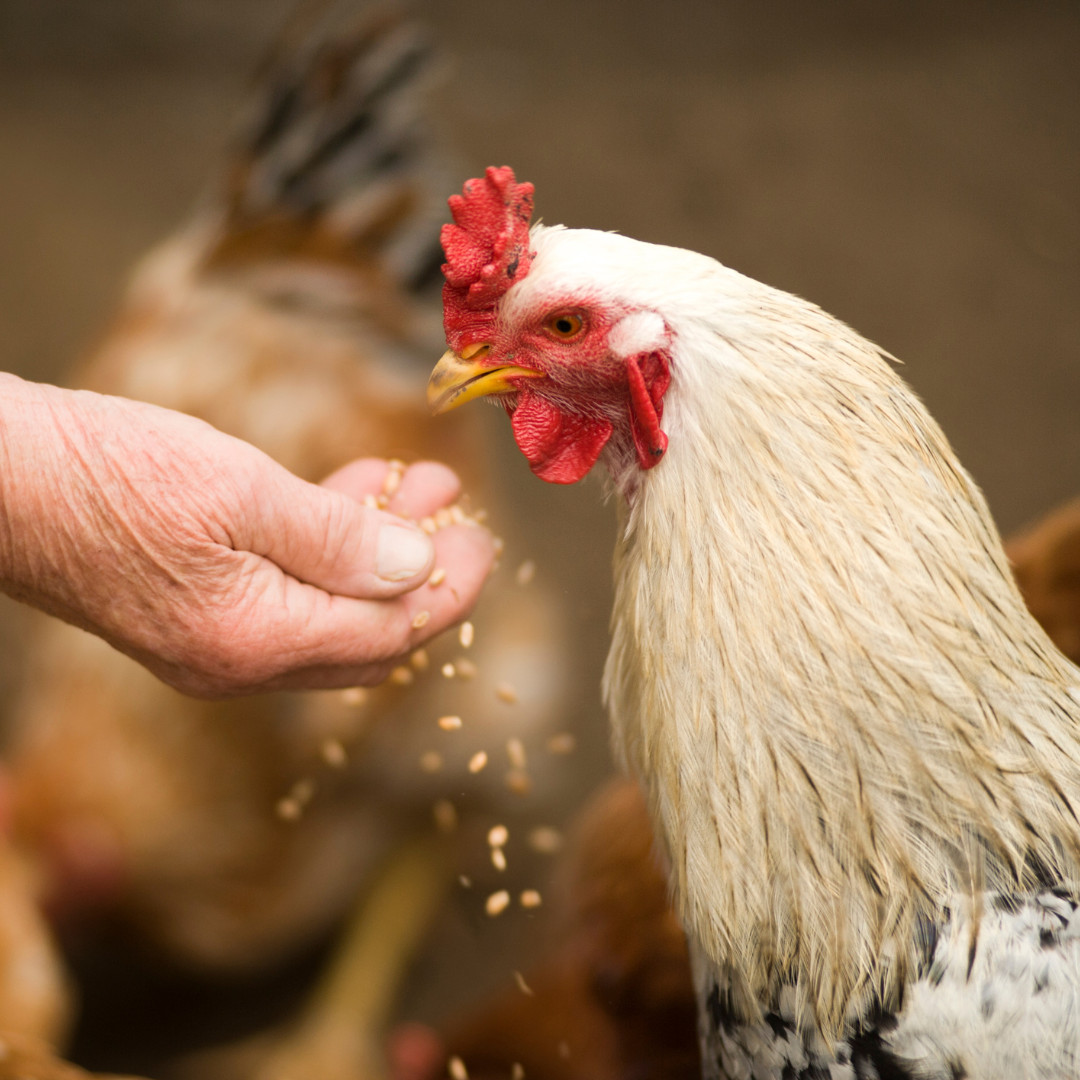
This post may contain affiliate links, which means that I may receive a commission if you make a purchase using these links, with NO additional cost to you.
What’s a homestead without poultry? Poultry is one of those gateway animals to the homesteader. They are a source of protein, bug control, and compost turners. As with any animal, however, there are a few common problems that can happen. Below I’ll describe the common problems and solutions including pasty butt, egg breaking, pecking each other, and not laying.
With baby poultry the big thing to watch for is pasty butt. Simply put, this is where the poop starts to build up and then covers the exit. Simply take a damp cloth, soak the butt and wipe the poop away. For other poultry starting tips, check out my previous blog on The Basics of Raising Baby Poultry.
In mature poultry, there are a few common problems that arise including not laying eggs, egg breaking, and pecking on each other.
First up, pecking on each other. Pecking often starts for 2 main reasons. Stress/boredom and nutrient deficiency. This is when one hen starts to peck another hen or rooster. This is not just the move over peck. This is the nonstop pecking feathers out, getting to the flesh and eating another alive.
If the birds are stressed or bored, this is easy to remedy. Give the birds more space. Close confinement is stressful for poultry. You can also give them things to do if they are in an enclosure.
Nutrient deficiency reasons for pecking are primarily protein shortage but can also be sodium or phosphorus. If you are using a store mix, check the label for how much protein is in the mix. Make sure you have enough bunk space for everyone to eat. If you are mixing your own feed, look at what is left in the bunk. Are they eating the protein? If not, you may need to change protein sources. If they are you may need to up the protein.
The second common issue for beginning poultry is egg breaking. This usually doesn’t happen unless confinement is closed and the hens get bored, like in a 5-day -30 weather stretch when no one leaves the coop. Once it starts, it can be hard to break. Pick up eggs frequently, make sure the hens have extra calcium available, so eggs stay strong. Getting a hard fake egg can help break the habit once it starts.
The final common issue is not laying eggs. This is a multifaceted problem honestly. There is an age, environmental, nutritional, and seasonal factors. If you got chicks in the spring, they will quite often lay that first winter, as the hens become 2 & 3, they are not as likely to lay all winter.
Some breeds are more susceptible to stress than others and the first thing that goes as soon as stress is involved is laying eggs. Eggs are by nature a seasonal food. We have selected chicken breeds to lay better with less light (aka winter months).
You can hang a light in the coop during the winter and keep getting eggs, but a word of caution. You have to let the hens molt or you will run your hens down to nothing. Molting is when the hens naturally loose feathers and put on the thick feathers for winter. Many you won’t even notice molting, others look like they were hit by a truck. Hens that have lost feathers on their back from roosters breeding will replace them during the molt. After the molt feel free to leave the light on for a time in the coop. A timer is best, so they do have some darkness to keep the proper circadian rhythm.
Nutritionally, you can add more protein and oil in the winter months to help support the hens. I do this with my flock as the extra bugs they were eating for protein are no longer available. High oil seeds, like sunflowers and whole corn help with energy in the winter.
Also, it takes a lot of calcium to make an egg. If the hens don’t have enough calcium, they will not lay. Add a self-feeder of oyster shells or dried and crushed eggshells. The hens will self-regulate. In the fall/winter after all nutrients have been replenished, hens will often start laying again.
Like all animals’ poultry comes with their own set of common problems. The good news is they are easily corrected.
As I've grown in my journey as an entrepreneur, mom, gardener, and livestock owner, I struggled to find a planner that met my needs and kept me organized. So, I MADE MY OWN. You can look at it on the link below and buy it on amazon below.
Don't want the whole calendar part? I got you! I pulled the gardening and animal care pages out and put them in a book all their own.
Wanting a community to lean into? Join the FREE Helping Your Family Homestead for Food group! This community is for the Mommas, looking to stay home and raise their kids, but unsure how to keep everyone fed and make ends meet. I share tips from my journey from the office to half the income and feeding my family from home, while maintaining good nourishing food. Tips include gardening, bulk buying, caning/preserving, livestock, homesteading, and home remedies. Your family is precious, and this group is to help you gain the knowledge and tools to keep your family well and not reliant on outside professionals. Remedies and tips are easy and simple for the busy momma, time is precious after all, including pregnancy, birth, young kids, and illness. Trust your Momma gut again! This community offers the resources + community you need to help get started on your journey and prepare for whatever future you envision.
Starting to garden doesn't have to be hard! I gathered all the tips I've learned over my gardening learning curve and made them into a simple course to jump start your gardening your life.
Supporting Your Family Naturally from the Inside Out community!! This community is for Mommas, looking to Support Your Family from Nature for Wellness. Tips range from nutrition, herbals, detoxing, natural cleaning, and essential oils. Basically, all the things I’ve learned slowly over the past 5+ years of my journey. We have moved off Facebook, to better serve our community and be able to discuss openly options for providing for your family in the best way possible.
Join the FREE Community
Join the FREE Community
I've had 3 very different pregnancies. After the first traumatic birth, I learned better and how to care for my body naturally and prevent common pregnancy and birth problems before they arise. This quick course will get you the tools you need to have a naturally healthy pregnancy, labor, and delivery. My first pregnancy I had a normal western medicine all the things pregnancy. My second? I flipped to completely natural, no medicine. Bonus: Preventing Preeclampsia Without the Aspirin & Healing from Birth Trauma
Click here to get the stories straight to your email:
For more on wellness tips click here:
For more on homesteading on your budget click here:
For more simple DIY updates click here:
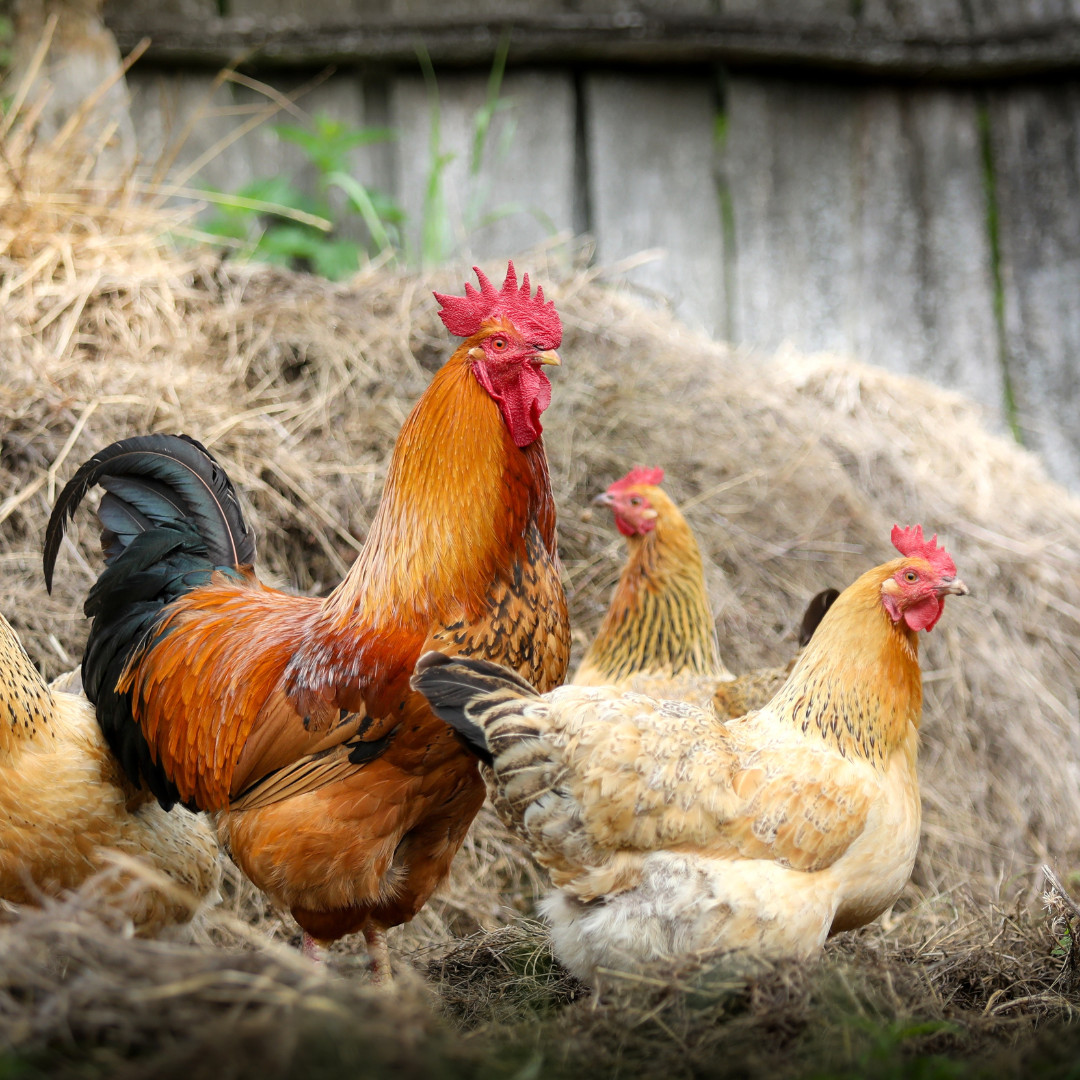
This post may contain affiliate links, which means that I may receive a commission if you make a purchase using these links, with NO additional cost to you.
Chickens are a forgiving livestock, however there are a few things to keep in mind when selecting the prefect chicken breed for your homestead. Some important things to consider are meat vs egg production, broody tendencies, and heat/cold tolerance. Below I’ll highlight some of each and the popular breeds within each category.
Meat or Egg production? Or both?
This is a big factor. Chicken breeds today have been selected for more meat producing genetics or egg production. There are a few breeds that fall into both categories, called dual purpose.
The most popular meat breed is the cochins. They are fast growers and fatten in about 8-10 weeks. 99% of the chicken raised commercially are the cochin breed. However, a breed with rising interest among homesteaders is the Freedom Rangers. They are more agile and smart than the Cochin but do take about 12-14 weeks to fatten.
Chickens that are selected for more egg production tend to lay heavy from about 6 months to 2 years, then they taper off, still laying, but not daily anymore. Popular breeds include Golden Comet, Sapphire Gem, ISA Browns, Australorps (egg record holders), Plymouth Rock, Wyandotte, Ameraucana, and Welsummer.
The Welsummer is a good year-round layer, even if they don’t lay the most eggs, and they handle heat and cold well. Australorps are the record holders, but don’t tend to like the heat. I do have one Australorp hen who insists on raising at least 1 clutch each year since turning 3. The Wyandotte is a good layer and also thrives in cold northern winters, but doesn’t like the extreme heat. They can survive, just may not lay well for you. They also don’t tend to go broody. The Ameraucana breed lays eggs from cream to bright blue color. They will slow down in the winter, but still lay eggs.
Breeds that are considered dual purpose are both good egg layers and can be good meat birds. These tend to not be the best in either category, but they are a happy middle if you want to raise all your own birds. Two of my favorite dual breeds are Buff Orpingtons and Sussex/Speckled Sussex. Both lay eggs well and are a bigger breed which would produce a decent amount of meat. Buff Orpingtons are said to have tendency to be broody which is a plus if you want a hen to raise chicks for you.
In general, heavy breeds tend to not like the heat as much and can slow laying. However, they also tend to tolerate the cold weather a little better. If you want to avoid broody hens, go with a breed that tends to not be broody. Overall, make sure to match your chickens to your environment and you will be happy with your chickens’ productions.
As I've grown in my journey as an entrepreneur, mom, gardener, and livestock owner, I struggled to find a planner that met my needs and kept me organized. So I MADE MY OWN. You can take a look at it on the link blow and buy it on amazon below
Don't want the whole calendar part? I got you! I pulled the gardening and animal care pages out and put them in a book all their own.
Wanting a community to lean into? Join the FREE Helping Your Family Homestead for Food group! This community is for the Mommas, looking to stay home and raise their kids, but unsure how to keep everyone fed and make ends meet. I share tips from my journey from the office, to half the income and feeding my family from home, while maintaining good nourishing food. Tips include: gardening, bulk buying, caning,/preserving, livestock, homesteading, and home remedies. Your family is precious and this group is to help you gain the knowledge and tools to keep your family well and not reliant on outside professionals. Remedies and tips are easy and simple for the busy momma, time is precious after all, including pregnancy, birth, young kids, and illness. Trust your Momma gut again! This community offers the resources + community you need to help get started on your journey and prepare for whatever future you envision.
Starting to garden doesn't have to be hard! I gathered all the tips I've learned over my gardening learning curve and made them into a simple course to jump start your gardening your life.
Supporting Your Family Naturally From the Inside Out community!! This community is for the Mommas, looking to Support Your Family from Nature for Wellness. Tips range from nutrition, herbals, detoxing, natural cleaning, and essential oils. Basically all the things I’ve learned slowly over the past 5+ years if my journey. We have moved off Facebook, so to better serve our community and be able to discuss openly option for providing for your family in the best way possible.
Join the FREE Community
Join the FREE Community
I've had 3 very different pregnancies. After the first traumatic birth, I learned better and how to care for my body naturally and prevent common pregnancy and birth problems before they arise. This quick course will get you the tools you need to have a naturally healthy pregnancy, labor, and delivery. My first pregnancy I had a normal western medicine all the things pregnancy. My second? I flipped to completely natural, no medicine. Bonus: Preventing Preeclampsia Without the Aspirin & Healing from Birth Trauma
Click here to get the stories straight to your email:
For more on wellness tips click here:
For more on homesteading on your budget click here:
For more simple DIY updates click here:
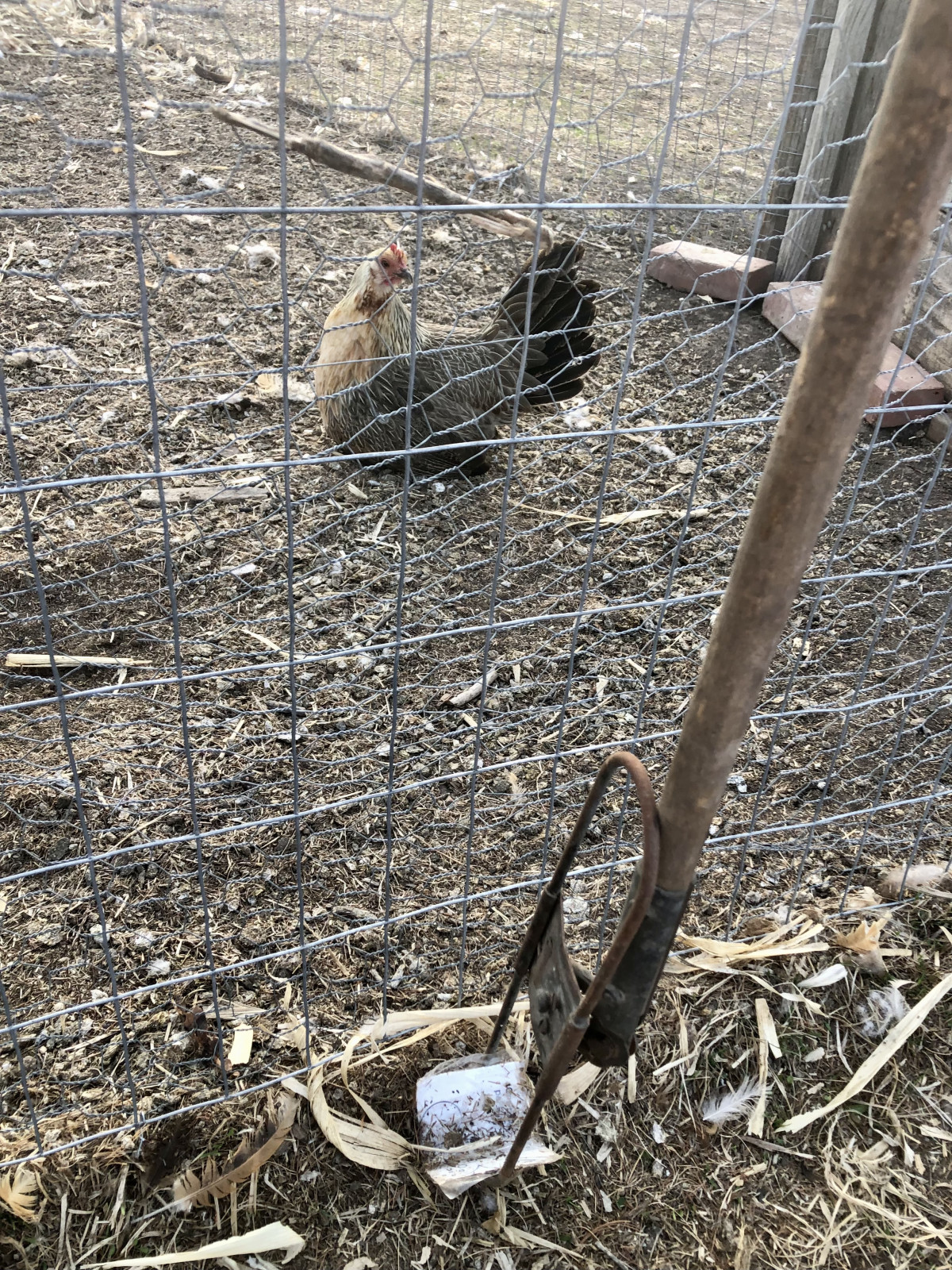
This post may contain affiliate links, which means that I may receive a commission if you make a purchase using these links, with NO additional cost to you.
The basics of a pen is to contain animals to a specific area for management or safety. This can give you a lot of freedom to design with resources you have to meet your and your animals’ needs. There are a few design differences to keep in mind for birds, or dogs.
First up the birds (chickens, turkey, guinea, ducks, geese, etc). If you are keeping birds locked in a run, you will need a predator proof fence. Chicken wire isn’t going to cut it. It is not strong enough to hold up the long term. Save yourself time and money and invest in welded wire. Bury 4-6 inches into the ground to keep predators from trying to dig in. You will need a fence at least 8 foot tall as well. If hawks are a problem, you’ll need some kind of overhead protection. That could be a physical fence top, or string wires across the top.
If you free range your flock, I highly recommend having a shed or night base for the birds to gather in that is protected. I lock my birds in at night, but I know people who don’t. The main thing is you will have to protect your flock somehow. I use a combination of geese and guardian dog. Our house has fields around it that in the summer, create a natural fence the birds don’t like to go into. The LGD knows his border and keeps the land predators pushed out, keeping the birds safe. The geese keep an eye on the sky and alert the LGD if there is an issue. It really is fun to watch them work together.
Mobil chicken tractors are also an option, but you have to have an open landscape for them work. In my home, I have too many trees for that to be a feasible option.
Now the farm dogs. This is probably the easiest. Once a farm dog knows his home base and his boundary, you really don’t need to keep them in a physical fence. When introducing a new dog or puppy to the farm, have a kennel or tie line to help them learn this is home. Then gradually let them out with supervised time, walks around the property. As they show themselves trustworthy, you can leave them free all the time. Keep the tie out handy for the times they do go too far, and you can tie them back up. For a time.
What about if you have a dog that just won’t stay home, or will not leave flocks/animals alone? In this case you will need some kind of fence or collar. Full disclosure. I have 2 cattle working dogs that will herd and terrorize the chickens non-stop. I have a pet safe wireless fence that keeps them in the front yard. The birds stay outside their fence, and everyone lives in peace (most of the time).
For a dog prone to wandering, I’d recommend a gps hunting collar. I had one for our LGD to keep him on the property, because we have such a small land base (3.4 acres). However, I must be within .5 miles to keep connection with his collar. The good news he’s most prone to wondering at night, so I keep the remote by my bed. I am looking at upgrading to a collar that connects to my phone. Currently, he is running without a collar and if he leaves, he is tied back up for a time.
Fence for bird flocks and farm dogs, doesn’t need to be complicated. It is important to keep everyone as safe as possible. A few tools and thinking through your landscape and you’ll have the best adaptable solution for you.
As I've grown in my journey as an entrepreneur, mom, gardener, and livestock owner, I struggled to find a planner that met my needs and kept me organized. So I MADE MY OWN. You can take a look at it on the link blow and buy it on amazon below
Don't want the whole calendar part? I got you! I pulled the gardening and animal care pages out and put them in a book all their own.
Wanting a community to lean into? Join the FREE Helping Your Family Homestead for Food group! This community is for the Mommas, looking to stay home and raise their kids, but unsure how to keep everyone fed and make ends meet. I share tips from my journey from the office, to half the income and feeding my family from home, while maintaining good nourishing food. Tips include: gardening, bulk buying, caning,/preserving, livestock, homesteading, and home remedies. Your family is precious and this group is to help you gain the knowledge and tools to keep your family well and not reliant on outside professionals. Remedies and tips are easy and simple for the busy momma, time is precious after all, including pregnancy, birth, young kids, and illness. Trust your Momma gut again! This community offers the resources + community you need to help get started on your journey and prepare for whatever future you envision.
Starting to garden doesn't have to be hard! I gathered all the tips I've learned over my gardening learning curve and made them into a simple course to jump start your gardening your life.
Supporting Your Family Naturally From the Inside Out community!! This community is for the Mommas, looking to Support Your Family from Nature for Wellness. Tips range from nutrition, herbals, detoxing, natural cleaning, and essential oils. Basically all the things I’ve learned slowly over the past 5+ years if my journey. We have moved off Facebook, so to better serve our community and be able to discuss openly option for providing for your family in the best way possible.
Join the FREE Community
Join the FREE Community
I've had 3 very different pregnancies. After the first traumatic birth, I learned better and how to care for my body naturally and prevent common pregnancy and birth problems before they arise. This quick course will get you the tools you need to have a naturally healthy pregnancy, labor, and delivery. My first pregnancy I had a normal western medicine all the things pregnancy. My second? I flipped to completely natural, no medicine. Bonus: Preventing Preeclampsia Without the Aspirin & Healing from Birth Trauma
Click here to get the stories straight to your email:
For more on wellness tips click here:
For more on homesteading on your budget click here:
For more simple DIY updates click here:
This post may contain affiliate links, which means that I may receive a commission if you make a purchase using these links, with NO additional cost to you.
If you're thinking of starting a small homestead, keeping chickens is a great way to start. Chickens are fairly low-maintenance and forgiving when it comes to feeding. As long as you provide them with some supplemental feed and kitchen scraps along with their free-range activities, they'll thrive. There are a few things to keep in mind, though. Whether you're looking to buy formulated feed from a farm store or make your own feed mix, this beginner's guide will give you all the tips you need to keep your chickens fed and healthy. If you can’t free range, no worries! You can still have chickens.
Formulated Feed:
The easiest way to keep your chickens fed is to buy formulated feed from a farm store. It contains all the necessary nutrients that your chickens need to thrive. You can choose between different formulations based on the age of your chickens, their breed, or if they're laying hens or meat birds. You can also choose between pellets, crumbles, or mash, depending on your chickens' preference. This is by far the easiest for free-ranging and those not. It is also more expensive. Keeping a self-feeder of oyster shells or crushed egg shells for laying hens, is a must to keep hens laying appropriately.
Kitchen Scraps:
Chickens love kitchen scraps, but there are a few things to keep in mind. Firstly, make sure that scraps are fresh and not moldy or spoiled. Secondly, avoid giving them scraps that are too salty, spicy, or greasy. Lastly, avoid giving them scraps that contain avocados, chocolate, onions, or citrus, as they can be toxic for chickens. Kitchen scraps that are great for chickens include fruits, vegetables, grains, and bread. I like to scatter these on the ground around the coop or in the run for extra entertainment for them.
Supplemental Feed:
If you can free-range your chickens in your backyard, you don't need to feed them a lot of formulated feed. However, it's always a good idea to have some supplemental feed on hand. You can buy scratch grains, which are a mixture of grains like corn, wheat, and barley, and scatter them in your backyard for your chickens to find. You can should add some oyster shell or grit to their feed to help with digestion. Free ranging is also excellent for bug control. They will meet most of their protein requirements from bugs. In the winter you will need to supplement more to meet their nutritional requirements.
Home Feed Mix:
If you're looking to save money and make your own feed mix, it's important to keep in mind the essential nutrients that your chickens need, such as protein, carbohydrates, vitamins, and minerals. You can make a mix of whole grains, like wheat, corn, oats, and barley, and add some soybean meal, distillers, or fish meal for protein. There are several different ways to raise your own protein by growing bugs for your chickens. You can also add some greens, like alfalfa, for vitamins and minerals. However, before making your own feed mix, it's important to research and consult with an expert to ensure that your chickens are getting all the essential nutrients they need. (I’ll be dropping what I’ve learned in my free Beginner Homesteading group linked below).
Water:
Finally, it's important to make sure that your chickens always have access to fresh water. Water helps with digestion and keeps your chickens hydrated. You can use a water dispenser or a chicken waterer to make sure that your chickens have access to water at all times. Make sure to change the water regularly to avoid contamination and bacteria growth. You will also need to clean and scrub out the waters about once a week in the summer to keep algae growth away.
Keeping chickens fed is fairly easy, as long as you provide them with the necessary nutrients they need to thrive. When you don’t they won’t give you eggs. Whether you choose to buy formulated feed, feed them kitchen scraps, or make your own feed mix, always keep in mind the essential nutrients that your chickens need. Also, make sure to provide them with fresh water at all times. By following these tips, your chickens will be happy and healthy, and your homestead will be off to a great start.
As I've grown in my journey as an entrepreneur, mom, gardener, and livestock owner, I struggled to find a planner that met my needs and kept me organized. So I MADE MY OWN. You can take a look at it on the link blow and buy it on amazon below
Don't want the whole calendar part? I got you! I pulled the gardening and animal care pages out and put them in a book all their own.
Wanting a community to lean into? Join the FREE Helping Your Family Homestead for Food group! This community is for the Mommas, looking to stay home and raise their kids, but unsure how to keep everyone fed and make ends meet. I share tips from my journey from the office, to half the income and feeding my family from home, while maintaining good nourishing food. Tips include: gardening, bulk buying, caning,/preserving, livestock, homesteading, and home remedies. Your family is precious and this group is to help you gain the knowledge and tools to keep your family well and not reliant on outside professionals. Remedies and tips are easy and simple for the busy momma, time is precious after all, including pregnancy, birth, young kids, and illness. Trust your Momma gut again! This community offers the resources + community you need to help get started on your journey and prepare for whatever future you envision.
Starting to garden doesn't have to be hard! I gathered all the tips I've learned over my gardening learning curve and made them into a simple course to jump start your gardening your life.
Supporting Your Family Naturally From the Inside Out community!! This community is for the Mommas, looking to Support Your Family from Nature for Wellness. Tips range from nutrition, herbals, detoxing, natural cleaning, and essential oils. Basically all the things I’ve learned slowly over the past 5+ years if my journey. We have moved off Facebook, so to better serve our community and be able to discuss openly option for providing for your family in the best way possible.
Join the FREE Community
Join the FREE Community
I've had 3 very different pregnancies. After the first traumatic birth, I learned better and how to care for my body naturally and prevent common pregnancy and birth problems before they arise. This quick course will get you the tools you need to have a naturally healthy pregnancy, labor, and delivery. My first pregnancy I had a normal western medicine all the things pregnancy. My second? I flipped to completely natural, no medicine. Bonus: Preventing Preeclampsia Without the Aspirin & Healing from Birth Trauma
Click here to get the stories straight to your email:
For more on wellness tips click here:
For more on homesteading on your budget click here:
For more simple DIY updates click here:
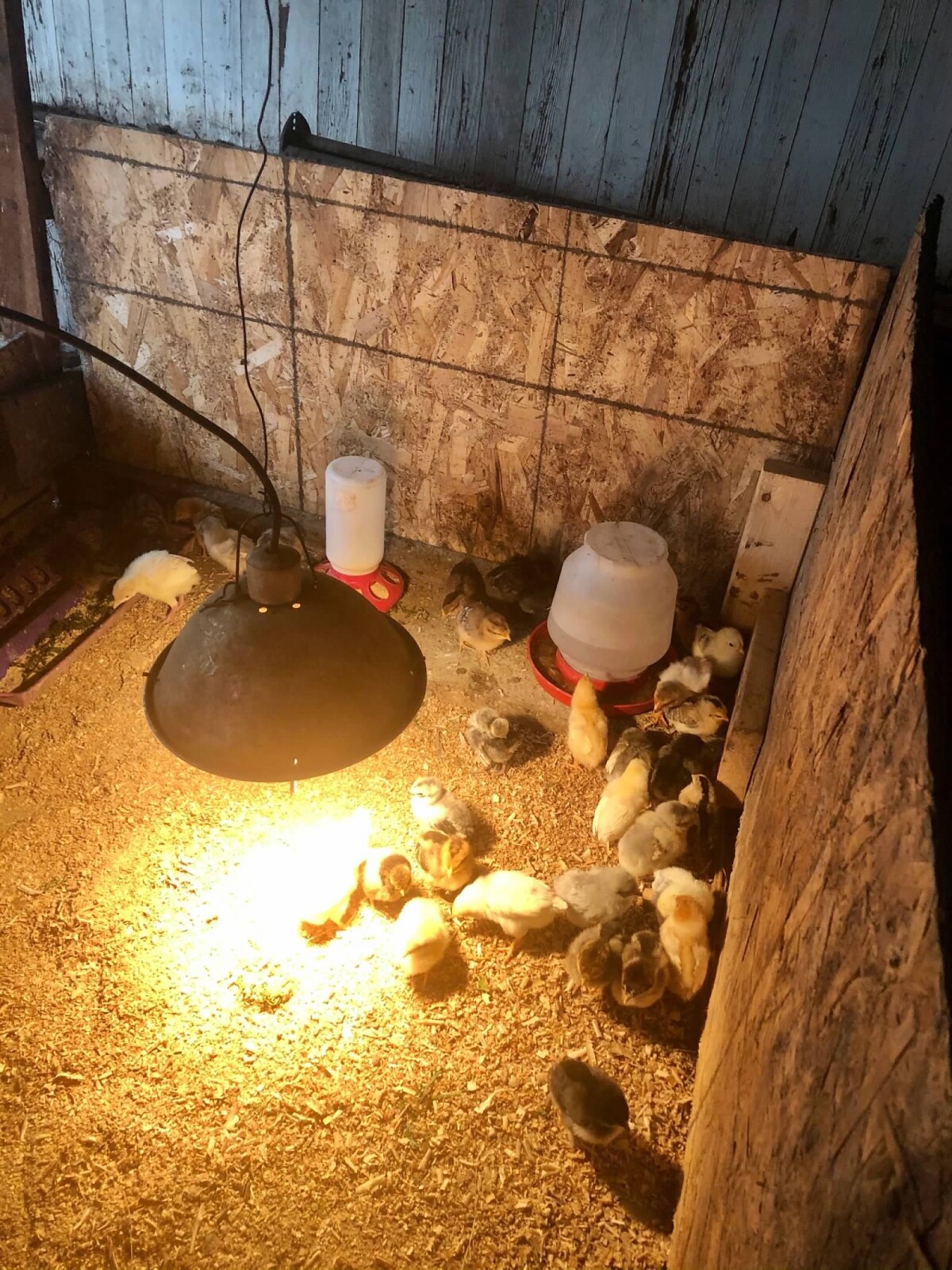
This post may contain affiliate links, which means that I may receive a commission if you make a purchase using these links, with NO additional cost to you.
Starting baby poultry is a great way to kick off your homesteading journey. It can be a bit more labor intensive than other animals, but it doesn’t have to be difficult if you know what tools and supplies you’ll need ahead of time. Here’s a quick breakdown of the basics for raising healthy chicks, guinea, duck, goose, and turkey.
Heat Requirements
Baby poultry need heat to thrive—specifically 90 to 95 degrees Fahrenheit. To help maintain this temperature in their brooding area, you will need heat lamps with red light bulbs (which helps prevent pecking) and a small space called a brooder box. This can be an old stock tank, or boarded area. Throughout the day, check the temperature by observing how the chicks are behaving. If they’re all huddled together under the lamp, they’re cold; if they’re spread out around the room or away from the heat lamp entirely, they’re too warm. At an ideal temperature, some chicks should be under the lamp while others explore and eat/drink on their own. After about a week they can move to a bigger area, mine is shown in the picture.
Watering
In addition to heat requirements, your chicks will also need plenty of water throughout the day—especially when they first arrive. To keep them safe while drinking, elevate their water dish slightly and add small rocks in the bottom so that they don’t accidentally drown themselves while drinking.
Feeding Requirements
Choosing food for your baby poultry can seem tricky at first but it doesn't have to be difficult! The easiest route is to buy chick starter food specially formulated for baby poultry. This type of feed contains all the essential nutrients that your birds need to grow healthy and strong (and no antibiotics are needed). Be sure to monitor your birds closely for signs of malnutrition or poor health—if you notice any problems with their condition after making changes to their diet or environment contact your vet immediately! After about 2-3 weeks, I start to transition the babies to my home mixed feed.
For bedding, the first day or two simply used newspaper, then add shavings once all the chicks have figured out where the food is. Otherwise, babies will peck at the shavings instead of the food, and starve out.
Upon arrival
You will take the chicks out of the box, dip their beak in the water and then the feed, before setting them down. They will all crowd together until you leave, so when checking on them later, you will need to be quiet to see the chicks actual behavior. In general, hold the chicks as little as possible the first 48 hours, to reduce their stress.
Raising baby poultry can seem intimidating at first but it doesn't have to be hard! With just a few basic supplies like heat lamps and chick starter feed, you'll be well on your way towards having healthy birds that are ready for life on your homestead. Keep an eye on them regularly and make sure they're getting enough food and water throughout each day—with proper care you'll soon have a flock of happy birds! Best of luck!
As I've grown in my journey as an entrepreneur, mom, gardener, and livestock owner, I struggled to find a planner that met my needs and kept me organized. So I MADE MY OWN. You can take a look at it on the link blow and buy it on amazon below
Don't want the whole calendar part? I got you! I pulled the gardening and animal care pages out and put them in a book all their own.
Wanting a community to lean into? Join the FREE Helping Your Family Homestead for Food group! This community is for the Mommas, looking to stay home and raise their kids, but unsure how to keep everyone fed and make ends meet. I share tips from my journey from the office, to half the income and feeding my family from home, while maintaining good nourishing food. Tips include: gardening, bulk buying, caning,/preserving, livestock, homesteading, and home remedies. Your family is precious and this group is to help you gain the knowledge and tools to keep your family well and not reliant on outside professionals. Remedies and tips are easy and simple for the busy momma, time is precious after all, including pregnancy, birth, young kids, and illness. Trust your Momma gut again! This community offers the resources + community you need to help get started on your journey and prepare for whatever future you envision.
Starting to garden doesn't have to be hard! I gathered all the tips I've learned over my gardening learning curve and made them into a simple course to jump start your gardening your life.
I've had 3 very different pregnancies. After the first traumatic birth, I learned better and how to care for my body naturally and prevent common pregnancy and birth problems before they arise. This quick course will get you the tools you need to have a naturally healthy pregnancy, labor, and delivery. My first pregnancy I had a normal western medicine all the things pregnancy. My second? I flipped to completely natural, no medicine. Bonus: Preventing Preeclampsia Without the Aspirin & Healing from Birth Trauma
Supporting Your Family Naturally From the Inside Out community!! This community is for the Mommas, looking to Support Your Family from Nature for Wellness. Tips range from nutrition, herbals, detoxing, natural cleaning, and essential oils. Basically all the things I’ve learned slowly over the past 5+ years if my journey. We have moved off Facebook, so to better serve our community and be able to discuss openly option for providing for your family in the best way possible.
Join the Community
Join the Community
Click here to get the stories straight to your email:
For more on wellness tips click here:
For more on homesteading on your budget click here:
For more simple DIY updates click here:
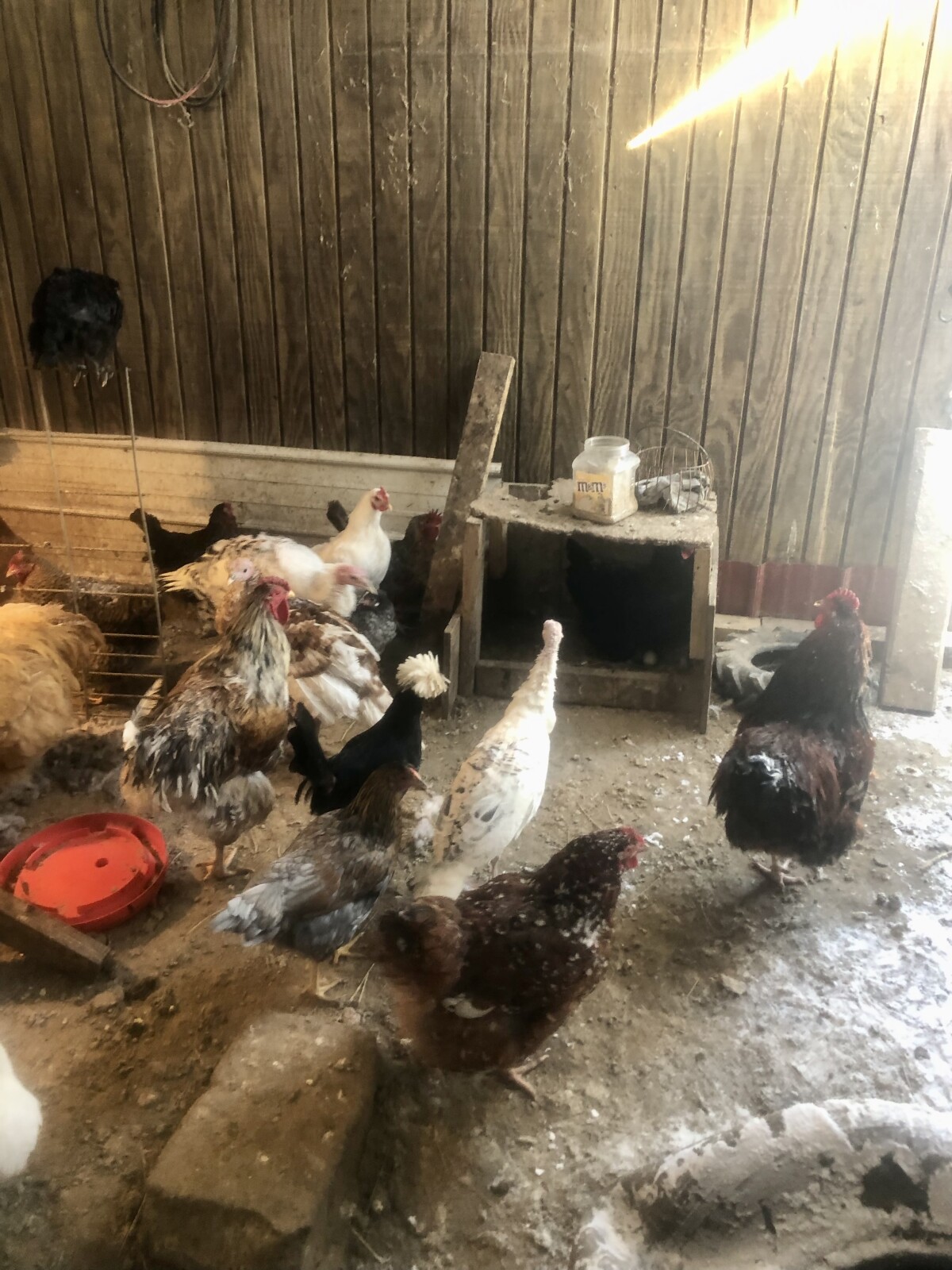
This post may contain affiliate links, which means that I may receive a commission if you make a purchase using these links, with NO additional cost to you.
Chickens are one of the easiest animals to raise, even if you have limited space. Whether you’re living on a city lot or a large farm, chickens can be a great addition to your homestead. Learning how to start is easy and doesn’t require much investment. Let’s look at the basics of raising chickens in your backyard.
Coop Requirements: Chickens need some type of draft free shelter, often called a coop. If you’re just getting started, this could be as simple as an old lean-too shed or barn. You can also build something more elaborate like a chicken palace! No matter what design you choose, make sure it has enough ventilation and enough room for your flock to move around comfortably without overcrowding. If they are completely confined you need 4 square feet of coop space per bird. If you are free ranging, you can shrink this a little, but not a lot.
The coop should also include roosts, this could be as simple as attaching 2x4 boards across the corner of the coop, or using an old ladder found in an old barn. Make sure you have 10 inches of roost space per bird. Nesting boxes are also needed for chickens. Again, this can be as simple as, an old tire or barrel hung up or on the ground. If you want to build one, a 12x12x12 inch box is preferred. You will need 1 box for every 4 laying hens.
Feed & Water Requirements: Another important component when raising chickens is providing them with fresh water and feed. For water, they need either a tray of water or traditional chicken waterers that are available online or through local feed stores. When it comes to food, chickens are quite forgiving so you can keep it simple with store bought feed or mix together your own ingredients from scratch depending on your flock’s needs! I use a mix of corn, distillers, sunflowers, and oats. They also love kitchen scraps of all kinds so supplementing their diet with leftovers from meals is always appreciated! I’ll give more on feed in a later blog.
The final thing to consider when caring for chickens is predator control. To keep predators away from your chickens, build secure fencing around their coop and run area — this will help keep them safe from potential predators such as raccoons or coyotes that may lurk nearby. If you are wanting to free range, you can, but chickens are easy targets for predators. Having a goose or a good rooster to run with your will help alarm the rest of the flock when danger is near in the sky. If you are on a large space, having a livestock guardian dog deters the larger predators like foxes and coyotes.
Raising chickens in your backyard is an easy way to provide fresh eggs for yourself while also having fun taking care of them. All they need is a comfortable home (coop), roosts, nesting boxes, food and water – all items which you can easily find around your house or purchase inexpensively at any farm store. So why not give it a try? With just the basics listed above, you'll be on your way towards becoming a happy homesteader!
As I've grown in my journey as an entrepreneur, mom, gardener, and livestock owner, I struggled to find a planner that met my needs and kept me organized. So I MADE MY OWN. You can take a look at it on the link blow and buy it on amazon below
Don't want the whole calendar part? I got you! I pulled the gardening and animal care pages out and put them in a book all their own.
Wanting a community to lean into? Join the FREE Helping Your Family Homestead for Food group! This community is for the Mommas, looking to stay home and raise their kids, but unsure how to keep everyone fed and make ends meet. I share tips from my journey from the office, to half the income and feeding my family from home, while maintaining good nourishing food. Tips include: gardening, bulk buying, caning,/preserving, livestock, homesteading, and home remedies. Your family is precious and this group is to help you gain the knowledge and tools to keep your family well and not reliant on outside professionals. Remedies and tips are easy and simple for the busy momma, time is precious after all, including pregnancy, birth, young kids, and illness. Trust your Momma gut again! This community offers the resources + community you need to help get started on your journey and prepare for whatever future you envision.
Starting to garden doesn't have to be hard! I gathered all the tips I've learned over my gardening learning curve and made them into a simple course to jump start your gardening your life.
I've had 3 very different pregnancies. After the first traumatic birth, I learned better and how to care for my body naturally and prevent common pregnancy and birth problems before they arise. This quick course will get you the tools you need to have a naturally healthy pregnancy, labor, and delivery. My first pregnancy I had a normal western medicine all the things pregnancy. My second? I flipped to completely natural, no medicine. Bonus: Preventing Preeclampsia Without the Aspirin & Healing from Birth Trauma
Supporting Your Family Naturally From the Inside Out community!! This community is for the Mommas, looking to Support Your Family from Nature for Wellness. Tips range from nutrition, herbals, detoxing, natural cleaning, and essential oils. Basically all the things I’ve learned slowly over the past 5+ years if my journey. We have moved off Facebook, so to better serve our community and be able to discuss openly option for providing for your family in the best way possible.
Join the Community
Join the Community
Click here to get the stories straight to your email:
For more on wellness tips click here:
For more on homesteading on your budget click here:
For more simple DIY updates click here:

This post may contain affiliate links, which means that I may receive a commission if you make a purchase using these links, with NO additional cost to you.
Animals can bring so much joy and entertainment to our lives. From chickens and guineas, all the way up to horses and bottle lambs, it’s hard not to love having animals around. Even though they bring us joy, there are bound to be some minor injuries along the way. That’s why I always keep a first aid kit handy, just in case! In this blog post, I’ll share with you some of my must-have animal first aid supplies for all species, as well as some specific supplies for birds that live on my homestead.
The Basics For Every Species
No matter what type of animal you have, there are certain items that should be kept in your first aid kit at all times.
• Vet Wrap - Not only is vet wrap incredibly versatile—it can be used for bandaging sprains or holding an ice pack in place—but it also stays put even when wet or dirty. This makes it perfect for animals who spend a lot of time outdoors or get muddy often. Or even the perfect band aid for yourself.
• Gauze Pads - These are essential for cleaning out any wounds that your animals may get. They’re also great for absorbing blood and other fluids from deeper cuts or scrapes so that you can properly assess the damage and treat accordingly.
• Diapers - Believe it or not, diapers are very useful in animal first aid kits! They make an excellent padding material when bandaging large areas (like a horse's leg) because they have soft material on both sides and are thick enough that they won't tear easily. Plus, they're absorbent so they'll help keep the wound area dry during treatment. They are perfect for keeping a foot clean in the case of a foot abscess too. For how to treat that, click here.
• Duck Tape – Honestly this is in the vet kit and tool box. In the first aid kit, duck tape is the top layer in an abscess boot, or the final rings on a leg wrap.
• Calendula Salve - This salve is amazing for treating minor cuts and scrapes on any species of animal. It has anti-inflammatory properties which will help reduce swelling and discomfort while promoting healing and tissue regeneration at the same time. I have used this on scrapes and gashes from untrimmed rooster spurs. Read how to make it here.
• Epson Salt - Epson salt is essential if your animals ever has an abscess. Typically, you dissolve the salt in warm water to make a soak solution.
• Clean Bucket – Having a clean bucket nearby helps you transport water or cleaning solutions easily while keeping your hands free during treatment of your animal’s injury. It also comes in handy if you need to soak any gauze pads before using them on a wound—just fill up the bucket with water, add whatever disinfectant you prefer, then drop the gauze pads into the solution until ready to use!
• Cotton Batting – Cotton batting is great for wrapping around sprains since it provides cushioning without being too tight against the skin which could cause further discomfort for your pet (or livestock). Also works well as stuffing inside bandages if needed!
• Clean Rags – These come in handy when wiping away dirt from wounds before applying topical treatments like calendula salve or iodine solution (which we'll talk about later). They can also be used to clean off tools/supplies between uses so that everything stays sanitary throughout treatment processes.
• Syringes – Can be used to deliver needed antibiotics, but most often I’m using them for drenching, or washing out wound areas to small for a hose.
• Iodine – This is specifically for disinfecting tools or cleaning out abscesses.
• Lavender and Copieba Essential Oil – I use these two with calendula salve, to speed healing and decrease the pain on open wounds.
For The Birds
If you have chickens, geese, turkeys or guineas in your flock then there are two additional products that I would highly recommend having on hand: Nutri-Drink and Hydro-Boost. Nutri-Drink is an electrolyte supplement that helps poultry stay hydrated in hot weather while Hydro-Boost provides essential vitamins and minerals necessary for proper nutrition. Both products can be added to water and they taste great so birds will drink them willingly! Any time a bird is injured or stressed (like newly shipped chicks), I add some to the water for the first day and help out.
Having the right supplies on hand when caring for injured animals can make all the difference between a successful recovery and an unsuccessful one. With this list of must-haves in mind, you will be well prepared if an injury occurs with any of your animals—especially birds! Gather up these items now so that they’re ready when needed; doing so will give you peace of mind knowing that if the worst happens you’ll have everything necessary to provide the best possible care to your beloved pets. Good luck!
As I've grown in my journey as an entrepreneur, mom, gardener, and livestock owner, I struggled to find a planner that met my needs and kept me organized. So I MADE MY OWN. You can take a look at it on the link blow and buy it on amazon below
Look inside the 2023 Planner
Buy the 2023 Planner
Don't want the whole calendar part? I got you! I pulled the gardening and animal care pages out and put them in a book all their own.
Look inside the Organizer
Buy the Organizer
Wanting a community to lean into? Join the FREE Helping Your Family Homestead for Food group! This community is for the Mommas, looking to stay home and raise their kids, but unsure how to keep everyone fed and make ends meet. I share tips from my journey from the office, to half the income and feeding my family from home, while maintaining good nourishing food. Tips include: gardening, bulk buying, caning,/preserving, livestock, homesteading, and home remedies. Your family is precious and this group is to help you gain the knowledge and tools to keep your family well and not reliant on outside professionals. Remedies and tips are easy and simple for the busy momma, time is precious after all, including pregnancy, birth, young kids, and illness. Trust your Momma gut again! This community offers the resources + community you need to help get started on your journey and prepare for whatever future you envision.
Join the Free Community
Starting to garden doesn't have to be hard! I gathered all the tips I've learned over my gardening learning curve and made them into a simple course to jump start your gardening your life.
Grab the Gardening Basics Course
Supporting Your Family Naturally From the Inside Out community!! This community is for the Mommas, looking to Support Your Family from Nature for Wellness. Tips range from nutrition, herbals, detoxing, natural cleaning, and essential oils. Basically all the things I’ve learned slowly over the past 5+ years if my journey. We have moved off Facebook, so to better serve our community and be able to discuss openly option for providing for your family in the best way possible.
Join the FREE Community
I've had 3 very different pregnancies. After the first traumatic birth, I learned better and how to care for my body naturally and prevent common pregnancy and birth problems before they arise. This quick course will get you the tools you need to have a naturally healthy pregnancy, labor, and delivery. My first pregnancy I had a normal western medicine all the things pregnancy. My second? I flipped to completely natural, no medicine. Bonus: Preventing Preeclampsia Without the Aspirin & Healing from Birth Trauma
Get the Healthy Pregnancy Course
Click here to get the stories straight to your email:
Sign up for the Blog
For more on wellness tips click here:
Sign up for Wellness tips
For more on homesteading on your budget click here:
Sign up for Homesteading Tips
Animals can bring so much joy and entertainment to our lives. From chickens and guineas, all the way up to horses and bottle lambs, it’s hard not to love having animals around. Even though they bring us joy, there are bound to be some minor injuries along the way. That’s why I always keep a first aid kit handy, just in case! In this blog post, I’ll share with you some of my must-have animal first aid supplies for all species, as well as some specific supplies for birds that live on my homestead.
The Basics For Every Species
No matter what type of animal you have, there are certain items that should be kept in your first aid kit at all times.
• Vet Wrap - Not only is vet wrap incredibly versatile—it can be used for bandaging sprains or holding an ice pack in place—but it also stays put even when wet or dirty. This makes it perfect for animals who spend a lot of time outdoors or get muddy often. Or even the perfect band aid for yourself.
• Gauze Pads - These are essential for cleaning out any wounds that your animals may get. They’re also great for absorbing blood and other fluids from deeper cuts or scrapes so that you can properly assess the damage and treat accordingly.
• Diapers - Believe it or not, diapers are very useful in animal first aid kits! They make an excellent padding material when bandaging large areas (like a horse's leg) because they have soft material on both sides and are thick enough that they won't tear easily. Plus, they're absorbent so they'll help keep the wound area dry during treatment. They are perfect for keeping a foot clean in the case of a foot abscess too. For how to treat that, click here.
• Duck Tape – Honestly this is in the vet kit and tool box. In the first aid kit, duck tape is the top layer in an abscess boot, or the final rings on a leg wrap.
• Calendula Salve - This salve is amazing for treating minor cuts and scrapes on any species of animal. It has anti-inflammatory properties which will help reduce swelling and discomfort while promoting healing and tissue regeneration at the same time. I have used this on scrapes and gashes from untrimmed rooster spurs. Read how to make it here.
• Epson Salt - Epson salt is essential if your animals ever has an abscess. Typically, you dissolve the salt in warm water to make a soak solution.
• Clean Bucket – Having a clean bucket nearby helps you transport water or cleaning solutions easily while keeping your hands free during treatment of your animal’s injury. It also comes in handy if you need to soak any gauze pads before using them on a wound—just fill up the bucket with water, add whatever disinfectant you prefer, then drop the gauze pads into the solution until ready to use!
• Cotton Batting – Cotton batting is great for wrapping around sprains since it provides cushioning without being too tight against the skin which could cause further discomfort for your pet (or livestock). Also works well as stuffing inside bandages if needed!
• Clean Rags – These come in handy when wiping away dirt from wounds before applying topical treatments like calendula salve or iodine solution (which we'll talk about later). They can also be used to clean off tools/supplies between uses so that everything stays sanitary throughout treatment processes.
• Syringes – Can be used to deliver needed antibiotics, but most often I’m using them for drenching, or washing out wound areas to small for a hose.
• Iodine – This is specifically for disinfecting tools or cleaning out abscesses.
• Lavender and Copieba Essential Oil – I use these two with calendula salve, to speed healing and decrease the pain on open wounds.
For The Birds
If you have chickens, geese, turkeys or guineas in your flock then there are two additional products that I would highly recommend having on hand: Nutri-Drink and Hydro-Boost. Nutri-Drink is an electrolyte supplement that helps poultry stay hydrated in hot weather while Hydro-Boost provides essential vitamins and minerals necessary for proper nutrition. Both products can be added to water and they taste great so birds will drink them willingly! Any time a bird is injured or stressed (like newly shipped chicks), I add some to the water for the first day and help out.
Having the right supplies on hand when caring for injured animals can make all the difference between a successful recovery and an unsuccessful one. With this list of must-haves in mind, you will be well prepared if an injury occurs with any of your animals—especially birds! Gather up these items now so that they’re ready when needed; doing so will give you peace of mind knowing that if the worst happens you’ll have everything necessary to provide the best possible care to your beloved pets. Good luck!
As I've grown in my journey as an entrepreneur, mom, gardener, and livestock owner, I struggled to find a planner that met my needs and kept me organized. So I MADE MY OWN. You can take a look at it on the link blow and buy it on amazon below
Look inside the 2023 Planner
Buy the 2023 Planner
Don't want the whole calendar part? I got you! I pulled the gardening and animal care pages out and put them in a book all their own.
Look inside the Organizer
Buy the Organizer
Wanting a community to lean into? Join the FREE Helping Your Family Homestead for Food group! This community is for the Mommas, looking to stay home and raise their kids, but unsure how to keep everyone fed and make ends meet. I share tips from my journey from the office, to half the income and feeding my family from home, while maintaining good nourishing food. Tips include: gardening, bulk buying, caning,/preserving, livestock, homesteading, and home remedies. Your family is precious and this group is to help you gain the knowledge and tools to keep your family well and not reliant on outside professionals. Remedies and tips are easy and simple for the busy momma, time is precious after all, including pregnancy, birth, young kids, and illness. Trust your Momma gut again! This community offers the resources + community you need to help get started on your journey and prepare for whatever future you envision.
Join the Free Community
Starting to garden doesn't have to be hard! I gathered all the tips I've learned over my gardening learning curve and made them into a simple course to jump start your gardening your life.
Grab the Gardening Basics Course
Supporting Your Family Naturally From the Inside Out community!! This community is for the Mommas, looking to Support Your Family from Nature for Wellness. Tips range from nutrition, herbals, detoxing, natural cleaning, and essential oils. Basically all the things I’ve learned slowly over the past 5+ years if my journey. We have moved off Facebook, so to better serve our community and be able to discuss openly option for providing for your family in the best way possible.
Join the FREE Community
I've had 3 very different pregnancies. After the first traumatic birth, I learned better and how to care for my body naturally and prevent common pregnancy and birth problems before they arise. This quick course will get you the tools you need to have a naturally healthy pregnancy, labor, and delivery. My first pregnancy I had a normal western medicine all the things pregnancy. My second? I flipped to completely natural, no medicine. Bonus: Preventing Preeclampsia Without the Aspirin & Healing from Birth Trauma
Get the Healthy Pregnancy Course
Click here to get the stories straight to your email:
Sign up for the Blog
For more on wellness tips click here:
Sign up for Wellness tips
For more on homesteading on your budget click here:
Sign up for Homesteading Tips
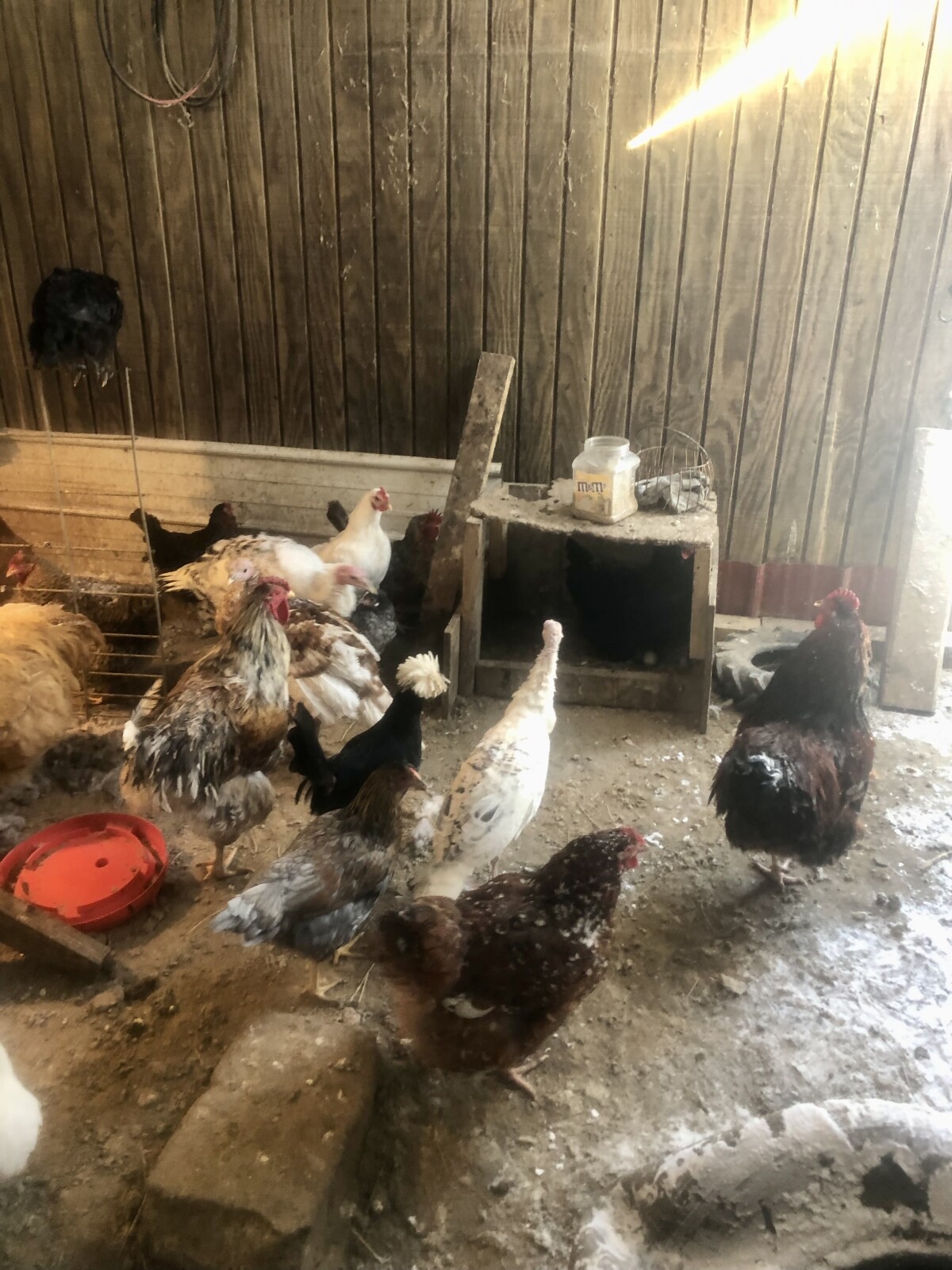
This post may contain affiliate links, which means that I may receive a commission if you make a purchase using these links, with NO additional cost to you.
Contrary to popular belief, you can have chickens in most places. Even if you live in the city and don’t think you can accommodate them. Chickens are one of the few types of livestock that take up very little space and still give you so many benefits. Laying hens will provide eggs for your family, plus make great disposals for kitchen and garden scraps. If you want to raise meat birds, it’s possible in most places too! Some cities may have limits as to how many and what kinds (no roosters) but they usually allow some type of chicken keeping. Check with your local ordinance for specifics. Let’s explore more about urban chicken keeping!
Knowing Your City Ordinances
Before you even think about getting chickens, check with your city ordinances. Some cities/towns may have limits or restrictions as to how many chickens you can have or whether or not you can have roosters on the property. This is especially important if there are neighborhood associations that could potentially cite you if they find out about your chickens before you get it approved by the local government. Make sure to check those first!
Space Considerations
Chickens don’t need much space; however, there are some things that should be taken into consideration such as the size of their coop and run area, plus having enough space for a place where they can scratch and dust bathe. Having at least 4 square feet per bird inside their coop is recommended, plus 10-15 square feet per bird in their run area outside. To little space and they become stressed which means less eggs for you.
They also need a secure place where they can get away from predators like raccoons, possums, hawks, and cats. A small backyard is usually sufficient to accommodate three or four hens; however, if you're raising meat birds that require more space than laying hens then your backyard needs will increase accordingly. If possible, try to keep this area away from any windy areas which could make them cold and uncomfortable during winter months.
Feed & Water Considerations
Chickens need a specific type of food that's formulated specifically for their nutritional needs — while they might enjoy eating leftovers from the table every once in a while, those foods should not make up the majority of their diet. Additionally, depending on where you live, there may be some restrictions for storing large amounts of feed due to vermin control laws or zoning regulations; again, this is something you should check into before committing to owning chickens. Even if you don’t have a large space to buy bulk ingredients, you can find preformulated bagged food at local farm stores.
A feeder and water station should also be taken into consideration when planning out your urban chicken keeping set up. You would need one feeder per 6-10 birds plus a water station big enough for all of them to drink from without overcrowding each other while they do so. The type of water or feeder is not important, you can find or reuse old stuff too, just make sure that these containers have lids so that food doesn’t get wet due to rain or rodents trying to get into it during nighttime hours when the chickens aren’t around (they usually go back inside at dusk).
Urban chicken keeping is becoming more popular due to its low-cost investment yet high return benefits of fresh eggs daily along with having an easy disposal system for kitchen scraps & garden waste. However, knowing local ordinances is always important before investing too much into any type of livestock keeping project; after all nobody wants fines added onto already expensive projects! But once everything gets approved by the local government then it's time to start thinking about ways we can make our future chicken flock comfortable while still having plenty of room left over in our yards for other activities like gardening or playing sports with friends & family members alike! All in all, urban chicken keeping is definitely something worth exploring further - go ahead & see what options might be available near where YOU live today!
As I've grown in my journey as an entrepreneur, mom, gardener, and livestock owner, I struggled to find a planner that met my needs and kept me organized. So I MADE MY OWN. You can take a look at it on the link blow and buy it on amazon below
Don't want the whole calendar part? I got you! I pulled the gardening and animal care pages out and put them in a book all their own.
Wanting a community to lean into? Join the FREE Helping Your Family Homestead for Food group! This community is for the Mommas, looking to stay home and raise their kids, but unsure how to keep everyone fed and make ends meet. I share tips from my journey from the office, to half the income and feeding my family from home, while maintaining good nourishing food. Tips include: gardening, bulk buying, caning,/preserving, livestock, homesteading, and home remedies. Your family is precious and this group is to help you gain the knowledge and tools to keep your family well and not reliant on outside professionals. Remedies and tips are easy and simple for the busy momma, time is precious after all, including pregnancy, birth, young kids, and illness. Trust your Momma gut again! This community offers the resources + community you need to help get started on your journey and prepare for whatever future you envision.
Starting to garden doesn't have to be hard! I gathered all the tips I've learned over my gardening learning curve and made them into a simple course to jump start your gardening your life.
I've had 3 very different pregnancies. After the first traumatic birth, I learned better and how to care for my body naturally and prevent common pregnancy and birth problems before they arise. This quick course will get you the tools you need to have a naturally healthy pregnancy, labor, and delivery. My first pregnancy I had a normal western medicine all the things pregnancy. My second? I flipped to completely natural, no medicine. Bonus: Preventing Preeclampsia Without the Aspirin & Healing from Birth Trauma
Supporting Your Family Naturally From the Inside Out community!! This community is for the Mommas, looking to Support Your Family from Nature for Wellness. Tips range from nutrition, herbals, detoxing, natural cleaning, and essential oils. Basically all the things I’ve learned slowly over the past 5+ years if my journey. We have moved off Facebook, so to better serve our community and be able to discuss openly option for providing for your family in the best way possible.
Join the Community
Join the Community
Click here to get the stories straight to your email:
For more on wellness tips click here:
For more on homesteading on your budget click here:
For more simple DIY updates click here:

